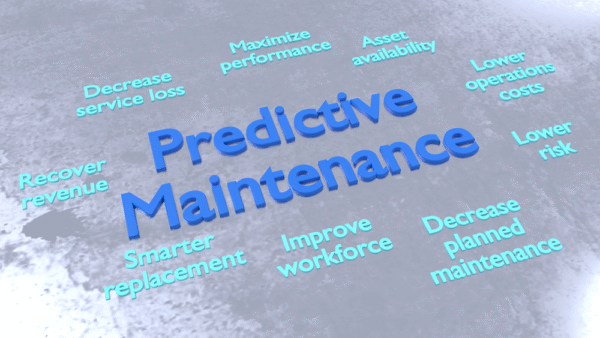
AI-powered predictive maintenance uses advanced technology to predict and prevent vehicle failures before they happen. Today’s AI solutions are capable of analyzing data from vehicle sensors instantly and spotting and flagging potential issues. This is just one area where artificial intelligence in automotive manufacturing and maintenance is changing the game, but it’s a big one.
Better Safety Through Artificial Intelligence in Automotive
Early Detection
The main way AI predictive maintenance improves automotive safety is by catching problems early. Faulty brakes, for instance, cause thousands of accidents yearly, and while brakes regularly get checked at scheduled maintenance visits, we can do better. AI is capable of detecting subtle wear in brake pads and warning drivers or technicians to replace them before they fail. A tire blowout at high speed can, likewise, be deadly, but AI can predict tire degradation through regular analysis of temperature and pressure data, showing just what the tire is enduring and when it needs to be changed.
Reducing Downtime and Costs
Safety is the primary goal, of course, but it’s only the beginning of what AI-powered predictive maintenance can do. It also cuts downtime and repair costs, to the delight of drivers and companies alike. When you can fix an issue before it causes a breakdown, not only do vehicles spend less time in the shop, but they also have to undergo less expensive work.
For fleet operators in particular, this means fewer delays, lowered costs, and happier customers. And when you have predictive maintenance working with real-time information, vehicle owners aren’t wasting any money on scheduled maintenance that isn’t actually necessary.
Better Scalability
AI predictive maintenance is highly versatile and can easily scale to fit various automotive sectors. For individual car owners, systems can be simplified to monitor key components like batteries or tires and alerts can be sent easily via smartphone apps. For large fleets, such as bus companies, more comprehensive platforms can track hundreds of vehicles and predict all their maintenance needs.
Integration with Emerging Vehicle Technologies
AI predictive maintenance can be integrated with emerging technologies, like vehicle-to-everything (V2X) communication and advanced driver-assistance systems (ADAS), and should be for the best results. V2X, for instance, allows cars to share sensor data with other vehicles or with the larger road infrastructure, and access to this information is essential for predictive maintenance.
If a car’s AI detects brake wear, for example, the AI system can cross-reference this report with data from nearby vehicles on the same road and confirm if there are any common conditions that might be causing the issue. The idea here is to use the power of collective intelligence to prevent accidents by identifying environmental risks before they cause a problem rather than after they cause destruction.
Overcoming Implementation Challenges
As great as AI-powered predictive maintenance is, getting it into vehicles isn’t simple. One challenge is integrating AI and IoT systems with existing vehicle designs. Since these vary across manufacturers, it’s tough to come up with a simple “plug ‘n play” solution. Sensors have to be compatible with different car models, and AI algorithms need to process all kinds of data accurately. Digital transformation experts tackle this by working with multiple vendors to build flexible frameworks where systems can work seamlessly across platforms.
Another hurdle is data security. Vehicles can generate some pretty sensitive information, like a vehicle owner’s location and driving patterns, and this info is naturally very tempting to hackers. This makes cybersecurity of the utmost importance, so advanced encryption and secure communication protocols to protect data are an absolute must. Training mechanics and fleet managers to use these systems is also going to be very important, as many are simply not that familiar with AI tools, and some may not trust them at all.
Trends in AI Predictive Maintenance
The future of AI-powered predictive maintenance is exciting. AI algorithms are improving fast, and every year they learn to predict failures with even greater accuracy and become capable of analyzing even more complex patterns from greater numbers of vehicles.
Integration with 5G networks is set to enable even faster data transfer, and that means we’ll soon be able to send instant alerts right to drivers, like warnings about a failing alternator. Autonomous vehicles in particular will rely heavily on predictive maintenance and need AI to monitor systems like radar and cameras to prevent collisions.
Augmented reality (AR) is another trend to watch. Mechanics may soon regularly use AR glasses to view AI-generated repair instructions overlaid on vehicle parts to speed up fixes and keep cars safer. This will also speed up mechanic training and even make on-the-job training more feasible.
Cost-Benefit Analysis
There’s no getting around the reality that implementing AI predictive maintenance requires some upfront costs. Sensors, software, and training all have to be paid for, but the benefits far outweigh expenses. For a fleet of 50 delivery trucks, for example, full installation might cost $100,000; but preventing even one major accident could easily save $200,000 in repairs, medical bills, and legal fees. For individual drivers, safer vehicles mean lower repair bills and insurance premiums.
The Value of Expert Consultation
AI predictive maintenance is a futuristic technology, but digital transformation specialists can make it accessible. With our unique technical expertise, we can design complete frameworks, integrate AI, IoT, and cybersecurity, and provide training and help for any automotive application. Whether you have a digital transformation plan in place or are just realizing how much you need one, we can customize solutions that work for you.
Reach out to us at SAAB RDS today and find out how our vision, mission, and values can work for your automotive manufacturing company.
